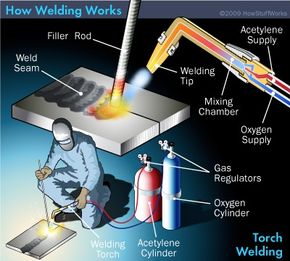Getting Welding Excellence: Revealing the Secrets of WPS Implementation and Optimization
In the world of welding, achieving quality is a pursuit that rests on the thorough application and optimization of Welding Procedure Specs (WPS) These foundational records serve as the foundation of welding operations, dictating the procedures and specifications necessary for creating high-quality welds constantly. However, the tricks to opening the full capacity of WPS exist not only in comprehending its relevance but likewise in understanding the complexities of its application and optimization. By diving into the crucial elements, strategies, difficulties, and ideal practices related to WPS, a globe of welding quality waits for those who are prepared to discover its midsts.
Relevance of WPS in Welding
The Importance of Welding Procedure Specifications (WPS) in the welding market can not be overemphasized, working as the backbone for ensuring consistency, top quality, and security in welding procedures. A WPS gives detailed directions on how welding is to be accomplished, including vital variables such as materials, welding processes, joint style, filler metals, preheat and interpass temperatures, welding currents, voltages, travel speeds, and more. By adhering to a distinct WPS, welders can keep harmony in their job, causing constant weld high quality across different projects.

Crucial Element of WPS
Reviewing the integral components of a welding procedure specification (WPS) is vital for comprehending its function in welding operations. One important element of a WPS is the welding process spec, which describes the particular welding processes to be used, such as gas tungsten arc welding (GTAW) or shielded steel arc welding (SMAW) By including these vital aspects into the WPS, welding procedures can be standardized, ensuring top quality, performance, and safety and security in welding procedures.
Techniques for WPS Optimization

Secondly, training and credentials of welding employees according to the particular demands of the WPS is extremely important. Providing extensive training programs and making certain that welders are certified to perform treatments detailed in the WPS can bring about better welds and decreased rework.
Furthermore, leveraging innovation such as welding software application and surveillance systems can assist in maximizing WPS. his response These tools can assist in tracking variables, ensuring parameters are within defined limits, and offering real-time comments to welders, enabling them to make instant modifications for enhanced weld high quality.
Typical Difficulties and Solutions
Dealing with challenges in carrying out the methods for WPS optimization can impede welding operations' effectiveness and high quality. One typical obstacle is poor training or understanding of the welding treatment requirements (WPS) amongst the welding group. This can bring about incorrect execution of welds, leading to problems and rework. To address this, thorough training programs ought to be implemented to make sure that all welders excel in applying and analyzing WPS properly.
One more obstacle is the absence of proper paperwork and record-keeping, which is essential for WPS optimization. Without clear records of welding criteria, materials utilized, and evaluation outcomes, it becomes challenging to determine areas for improvement and make certain consistency in welding processes. Carrying out a robust documents system, such as digital welding monitoring software, can aid simplify record-keeping and assist in data analysis for continual renovation.
In addition, irregular welding equipment calibration and maintenance can position a significant obstacle to WPS optimization. Normal equipment checks, calibration, and maintenance schedules must be stuck to purely to ensure that welding criteria are accurately regulated and preserved within the specified tolerances (welding WPS). By resolving these typical difficulties with positive remedies, welding procedures can enhance effectiveness, top quality, and total welding excellence
Best Practices for WPS Implementation
To make certain effective WPS implementation in welding operations, adherence to industry criteria and careful interest to information are extremely important. When launching WPS execution, it is critical to begin by thoroughly recognizing the specific welding needs of the task. This requires a detailed testimonial of the welding procedure specs, products to be welded, and the ecological problems in which the welding will certainly happen.
As soon as the demands are clear, the next action is to pick the proper welding procedure that straightens with these specs. This involves seeking advice from the pertinent codes and criteria, such as those provided by the American Welding Culture (AWS) or the International Organization for Standardization (ISO), to guarantee conformity and top quality.
Additionally, recording the whole WPS execution procedure is crucial for traceability and quality assurance. Thorough documents should be maintained regarding welding criteria, product preparation, preheat and interpass temperatures, welding consumables utilized, and any type of deviations from the original procedure. Regular audits and evaluations of the WPS can assist identify locations for improvement and guarantee ongoing optimization of the welding process.


Final Thought
To conclude, the implementation and optimization of Welding Treatment Specifications (WPS) is vital for attaining welding excellence. By comprehending the crucial elements of WPS, executing effective approaches for optimization, resolving typical obstacles, and complying with finest techniques, welders can make sure top notch welds and risk-free working problems. It is my latest blog post imperative for specialists in the welding sector to focus on the appropriate application of WPS to boost total welding performance and accomplish wanted original site end results.
The Value of Welding Procedure Specs (WPS) in the welding sector can not be overstated, offering as the foundation for making sure uniformity, quality, and security in welding procedures. A WPS provides comprehensive guidelines on exactly how welding is to be lugged out, including vital variables such as products, welding processes, joint design, filler metals, interpass and preheat temperatures, welding currents, voltages, traveling speeds, and a lot more. One essential element of a WPS is the welding procedure spec, which describes the details welding processes to be utilized, such as gas tungsten arc welding (GTAW) or shielded steel arc welding (SMAW) By including these essential elements into the WPS, welding procedures can be standardized, making sure high quality, efficiency, and safety in welding procedures.
It is vital for experts in the welding sector to focus on the appropriate implementation of WPS to enhance general welding efficiency and achieve preferred results.